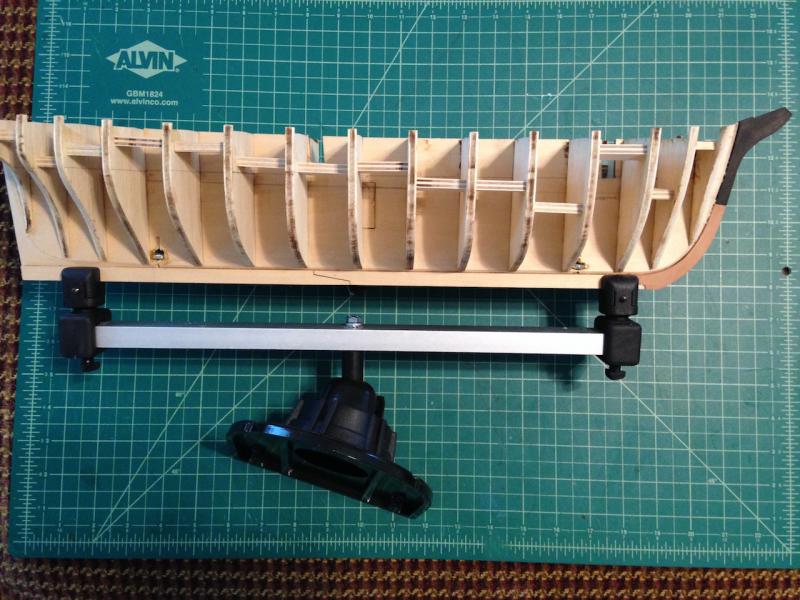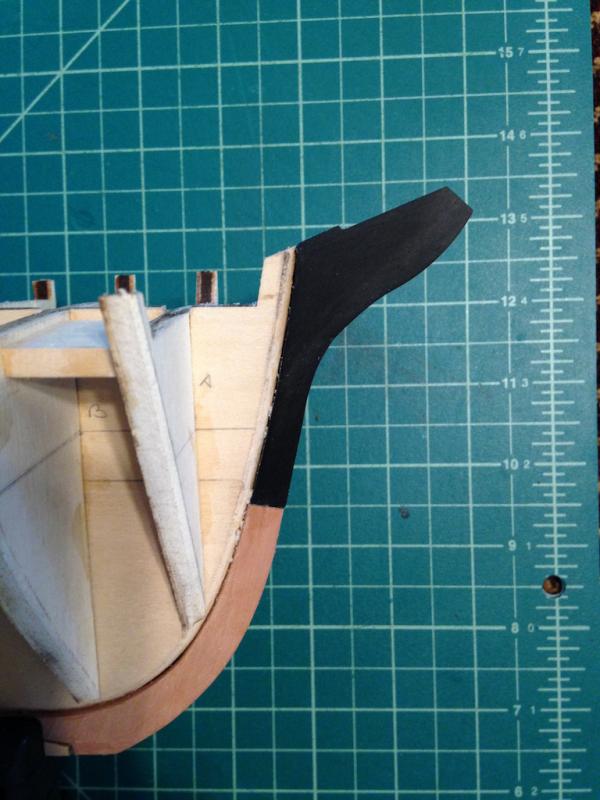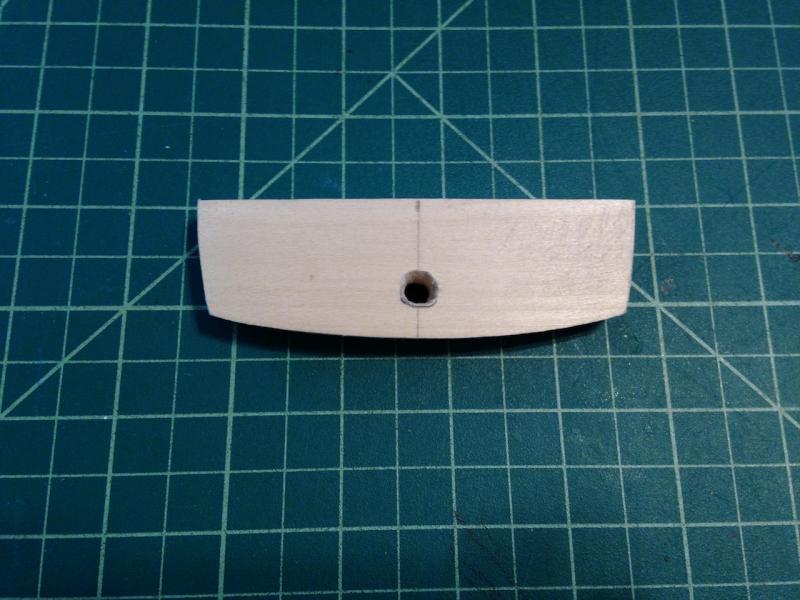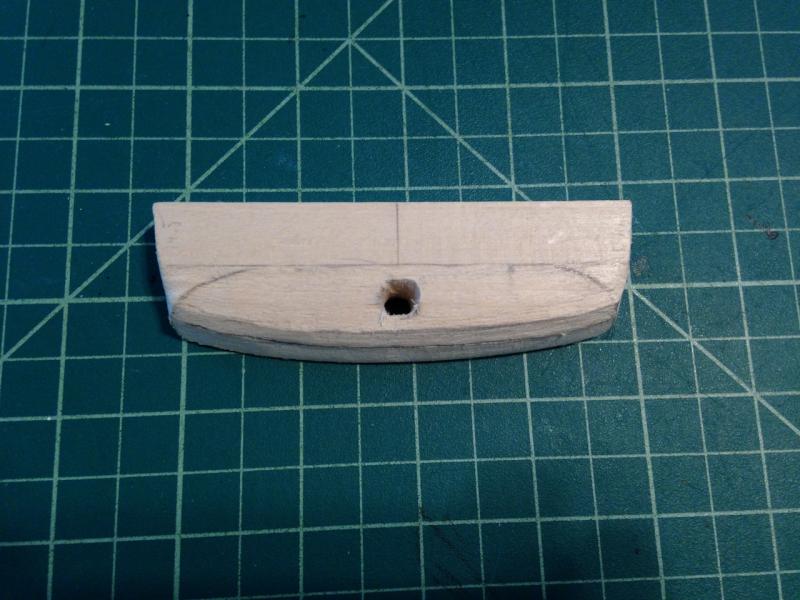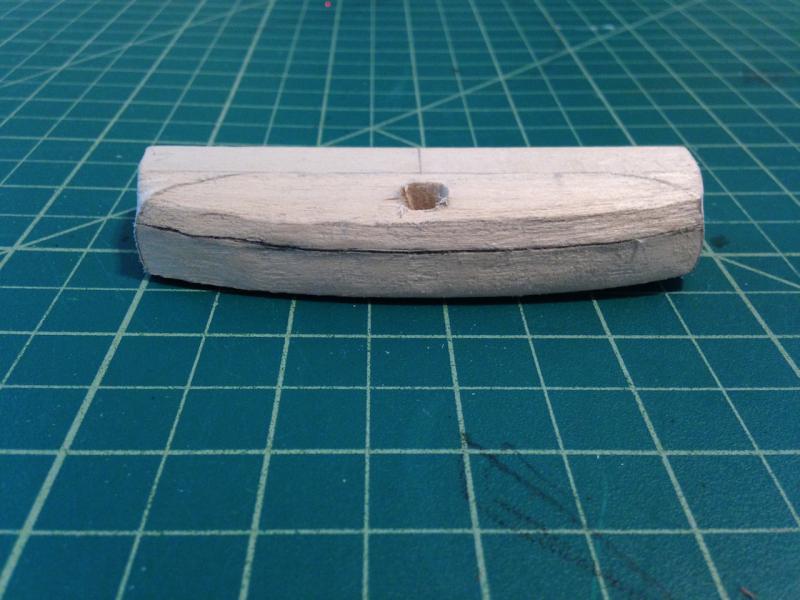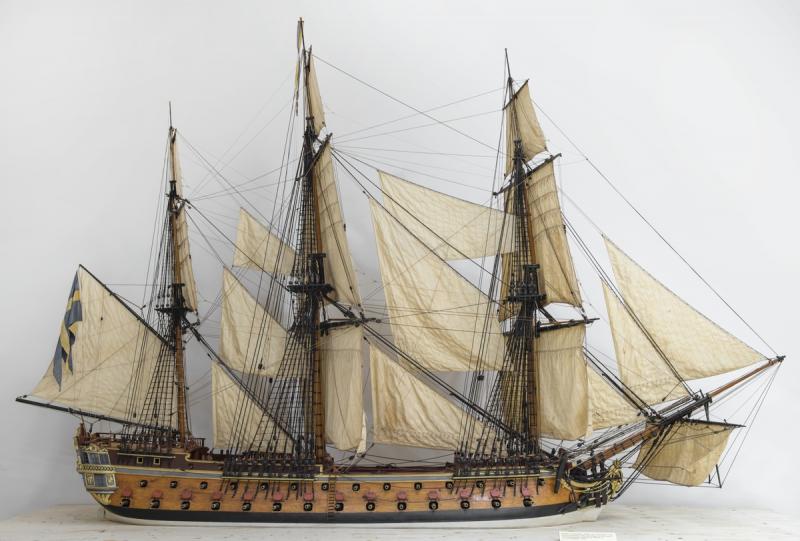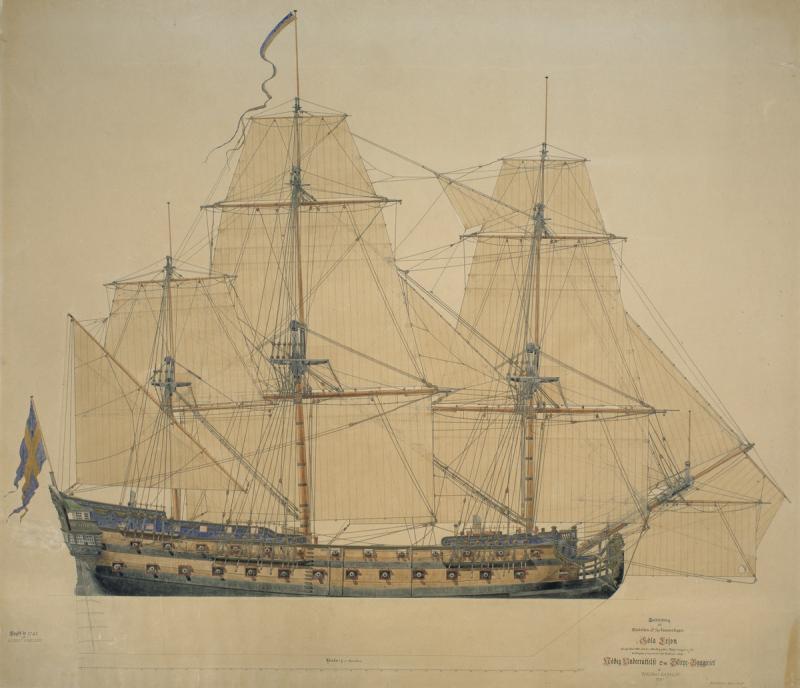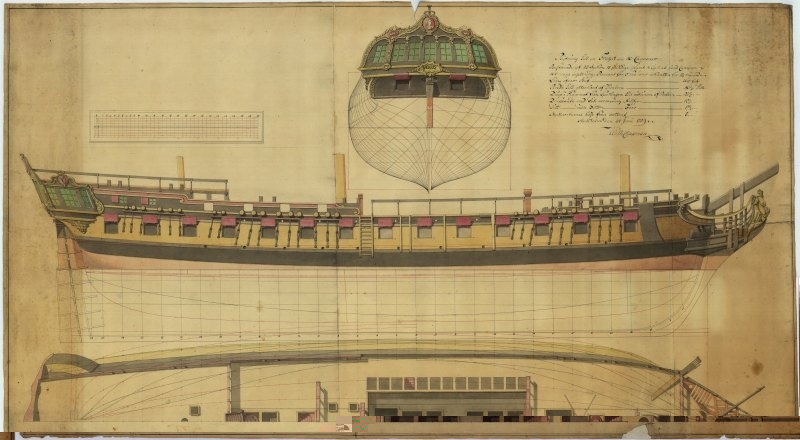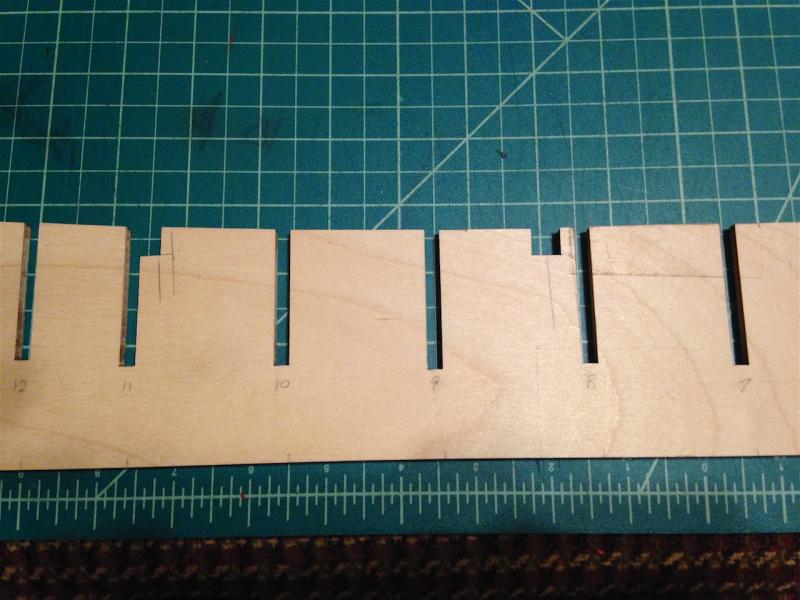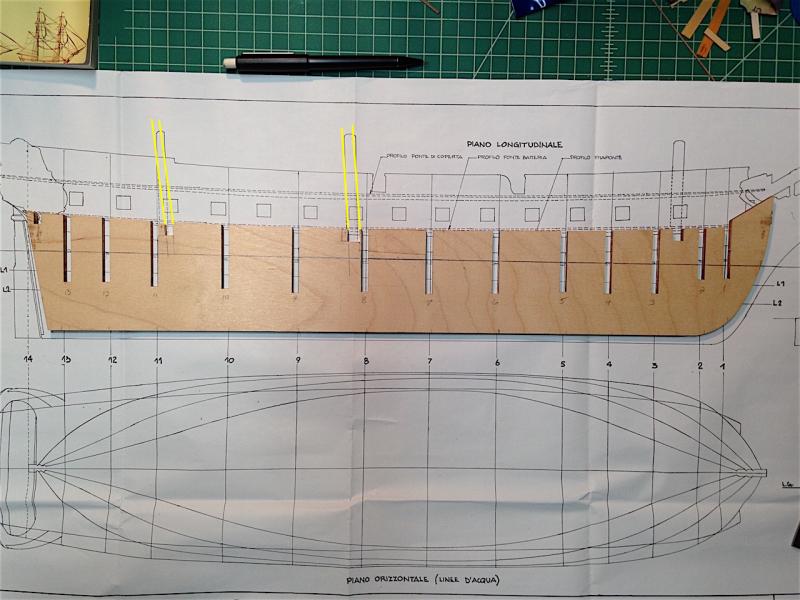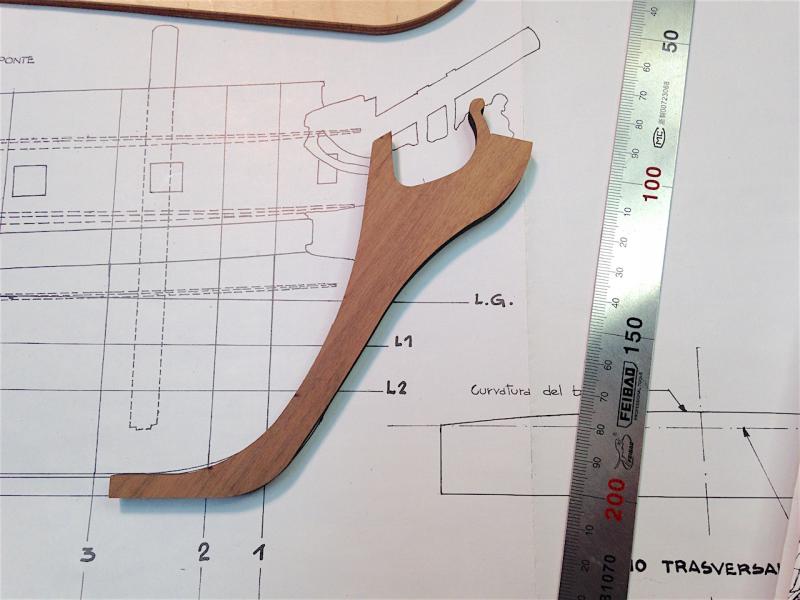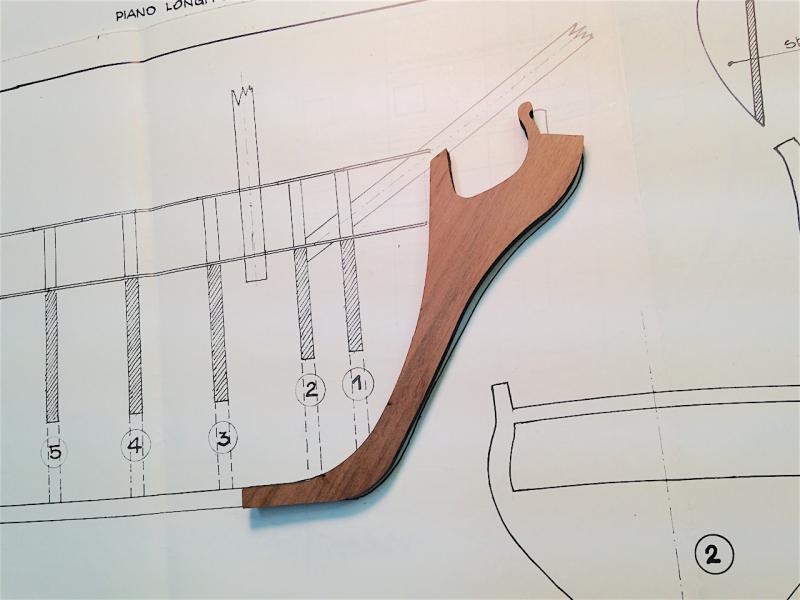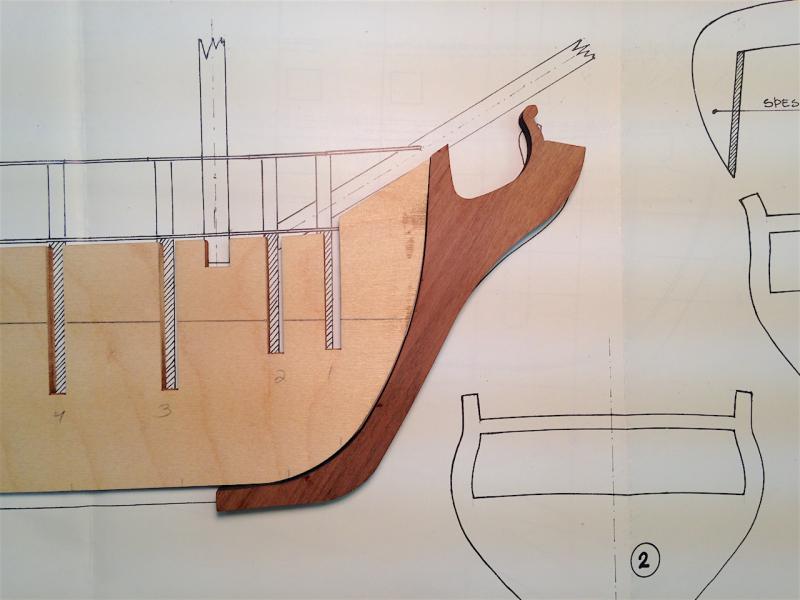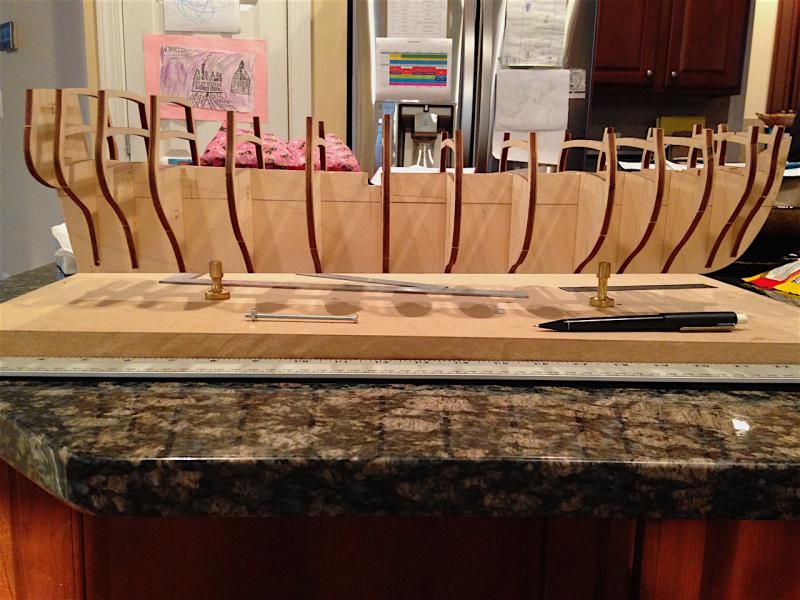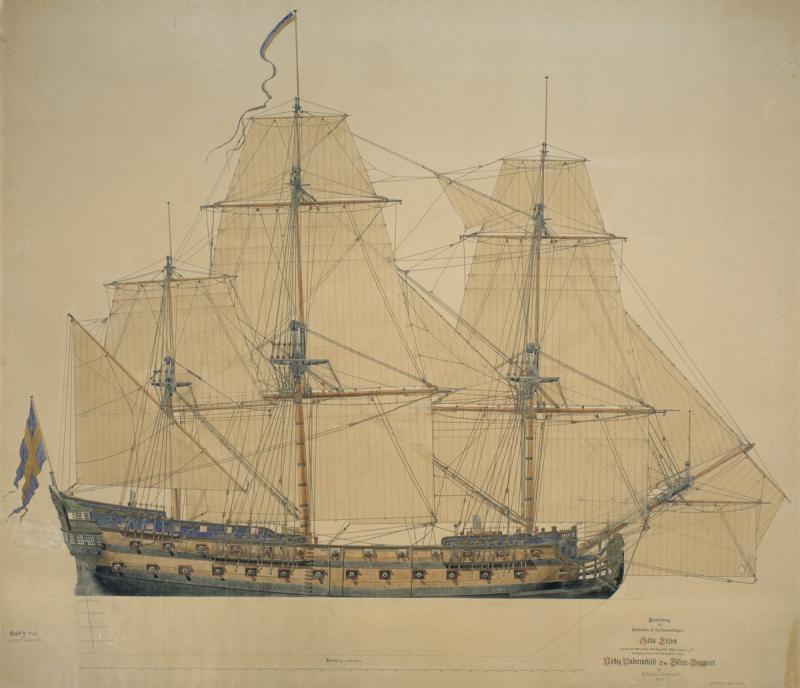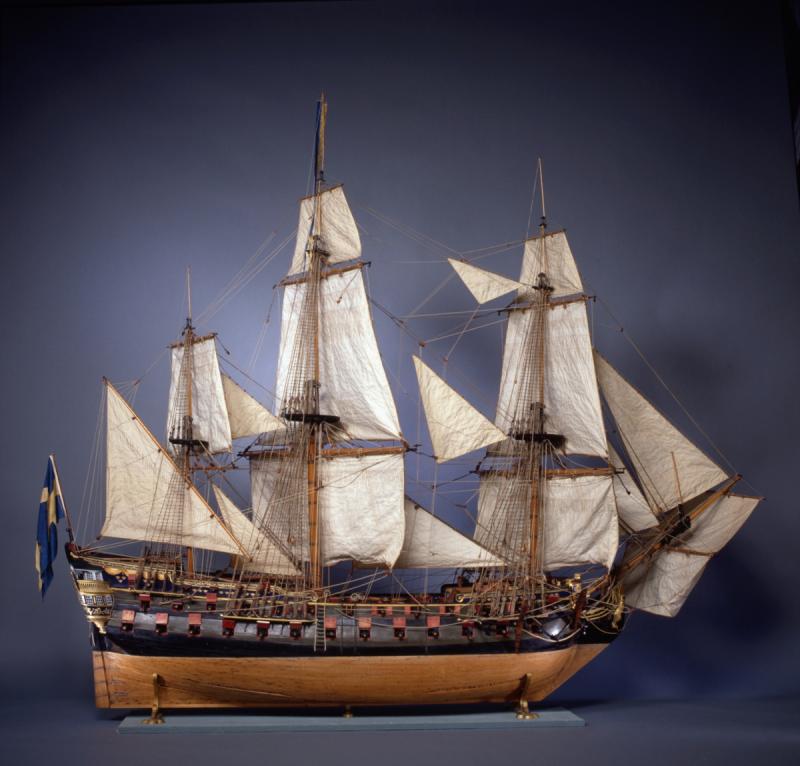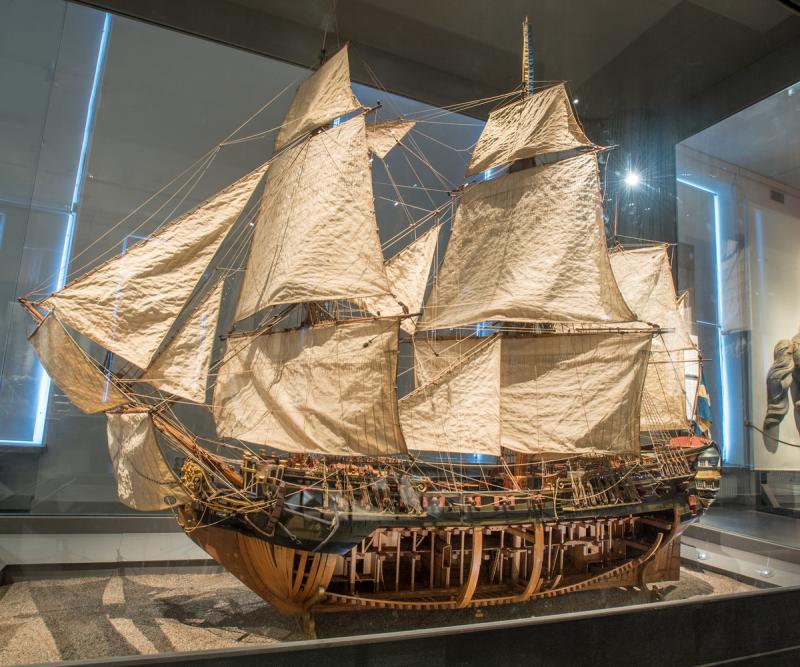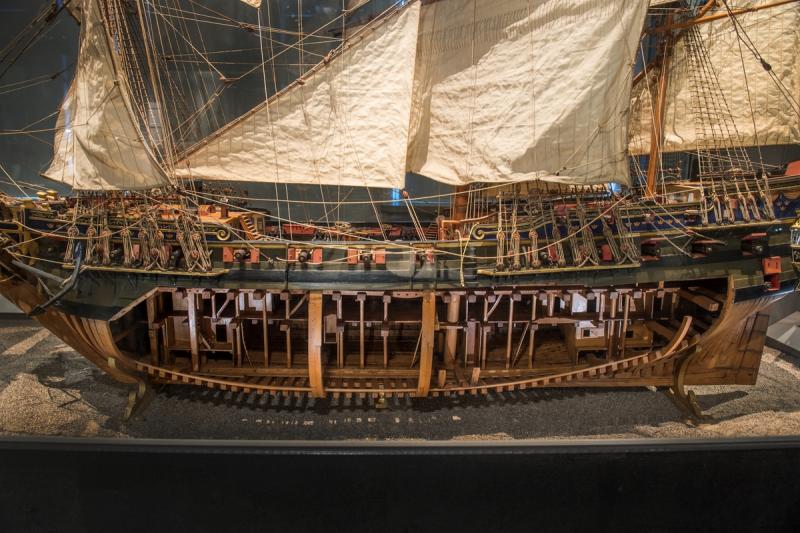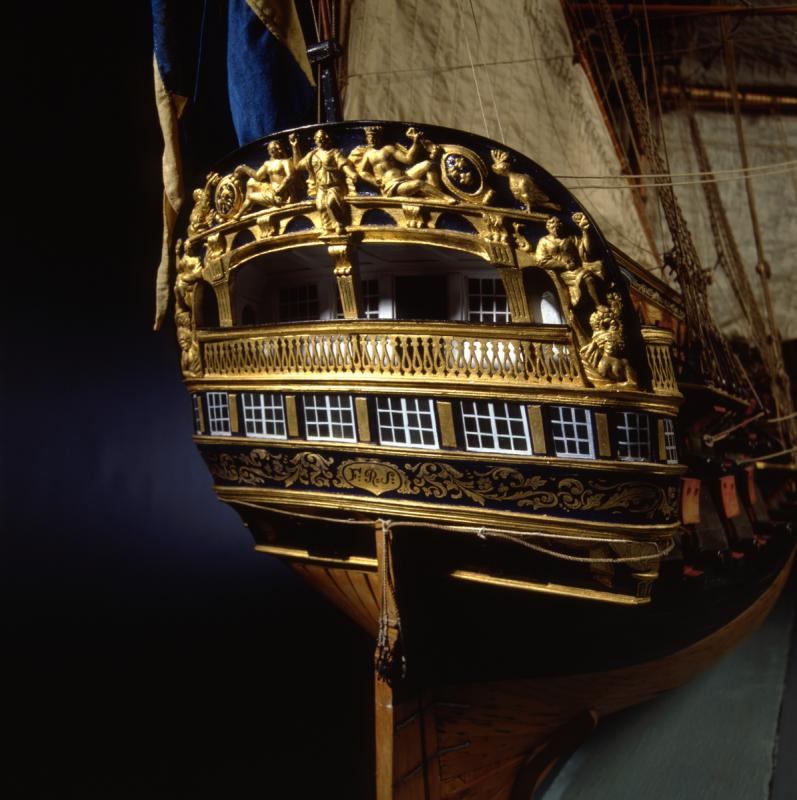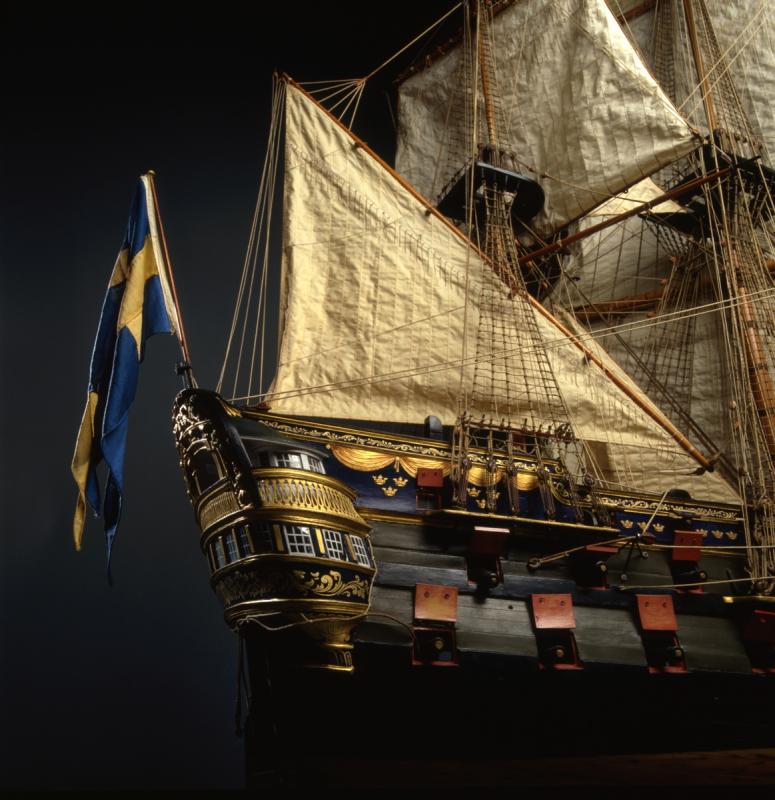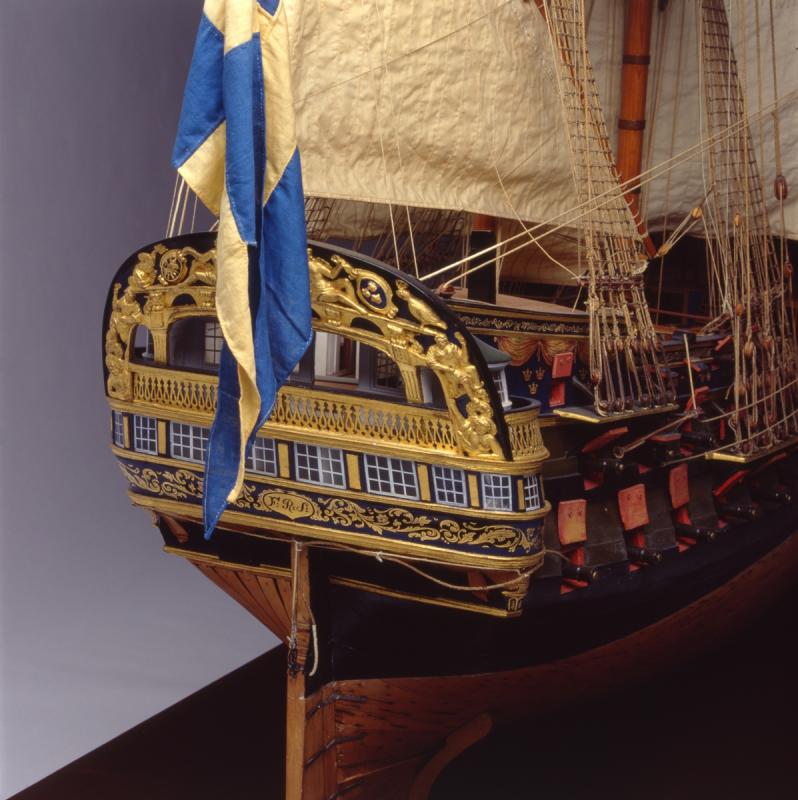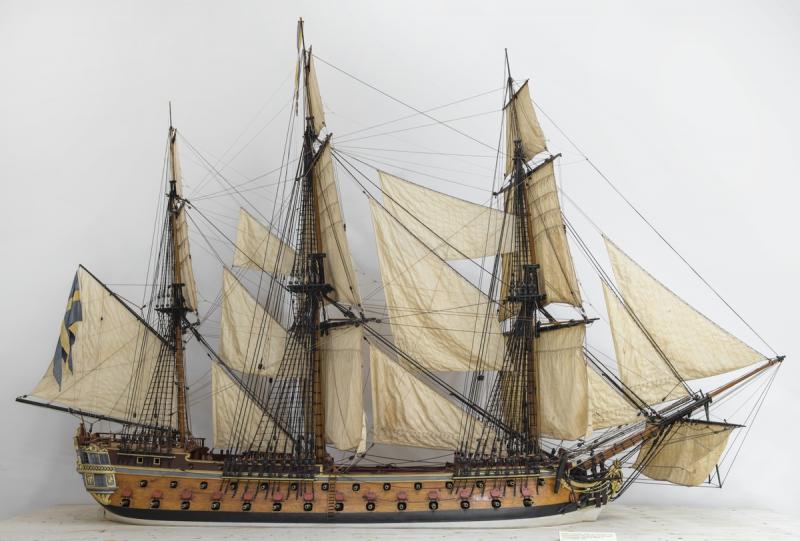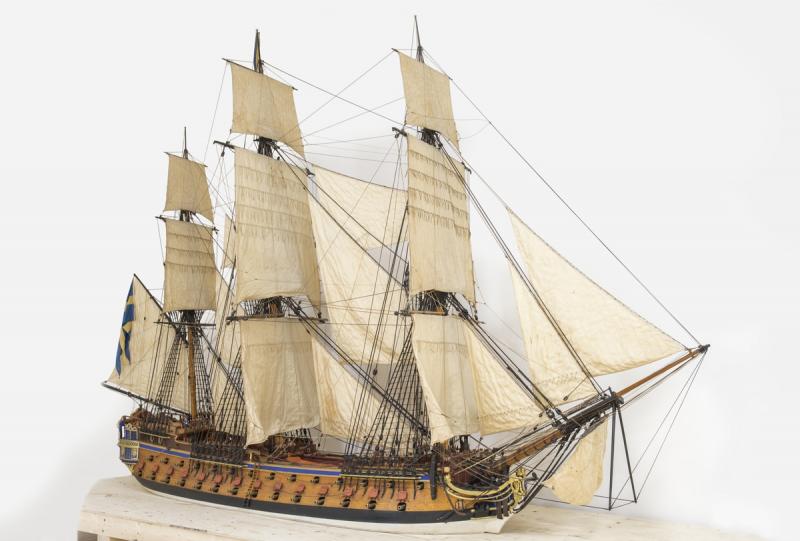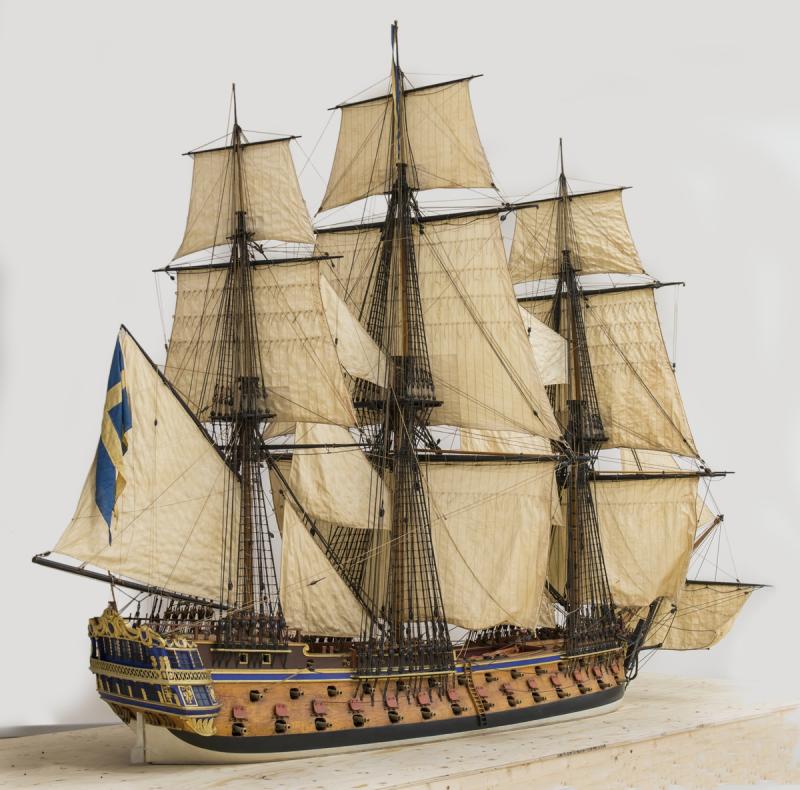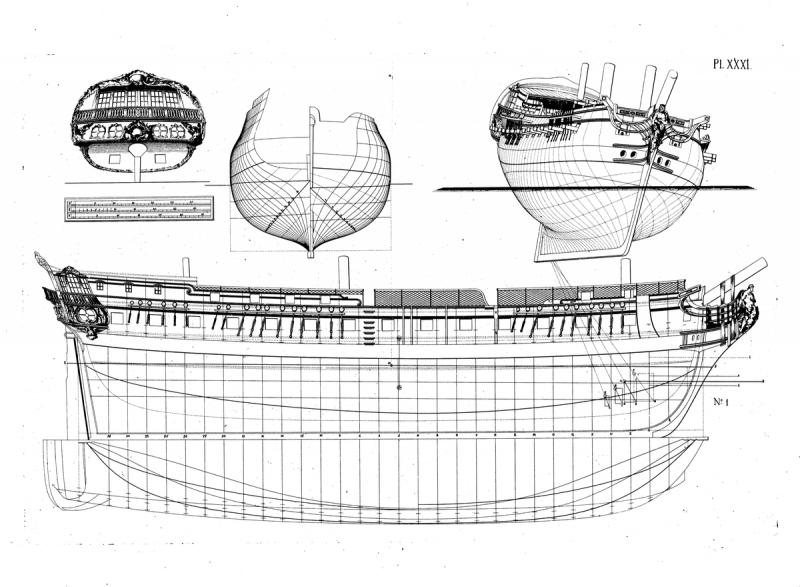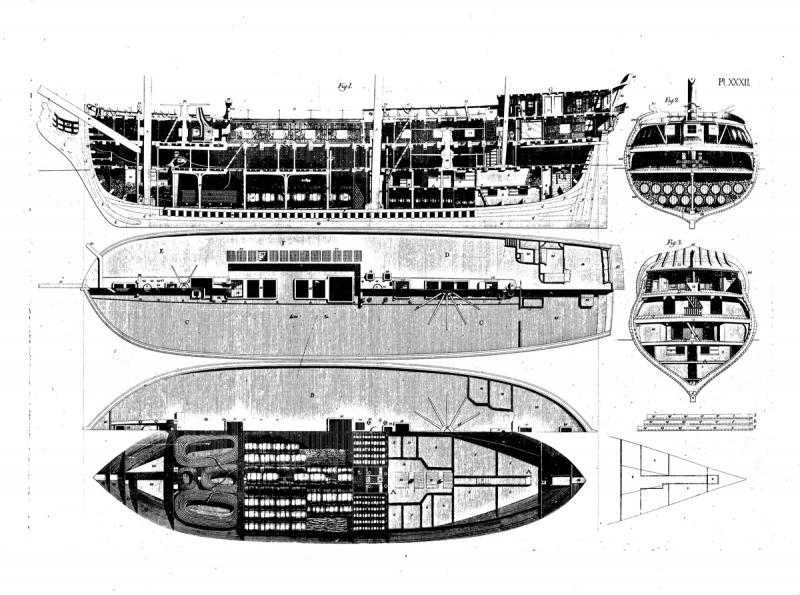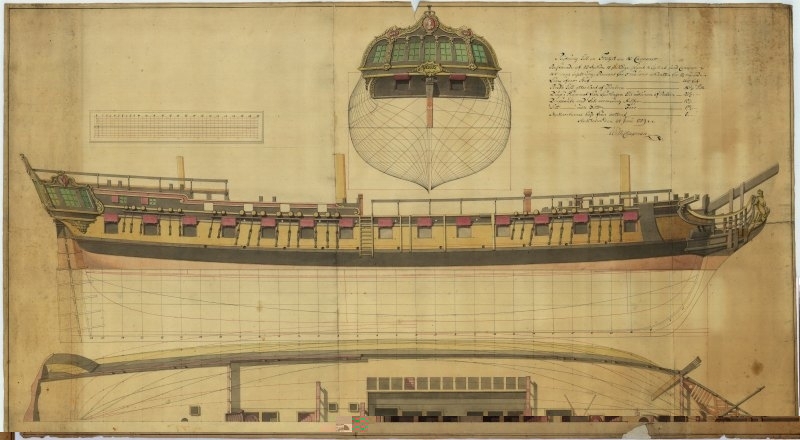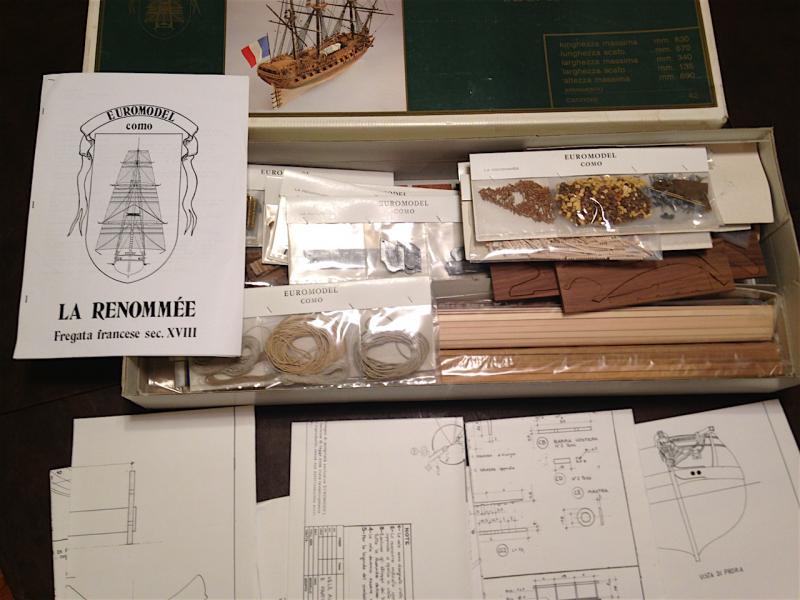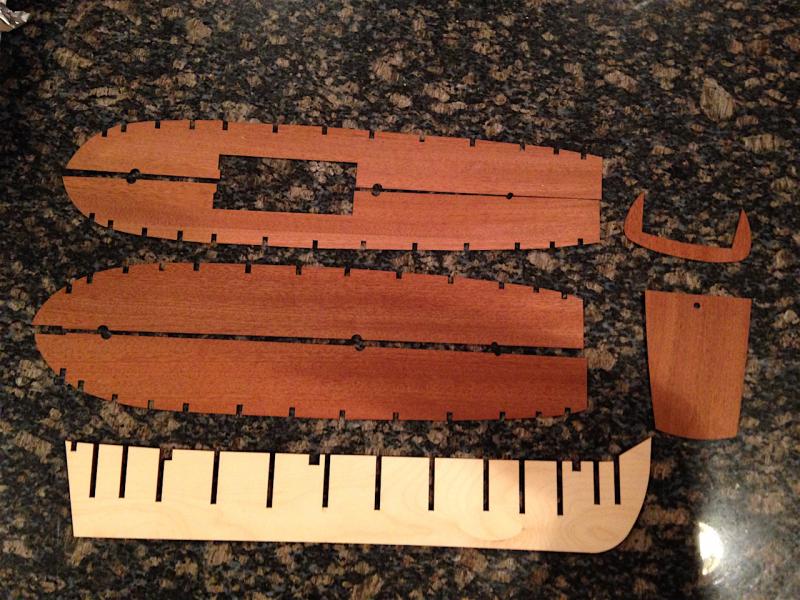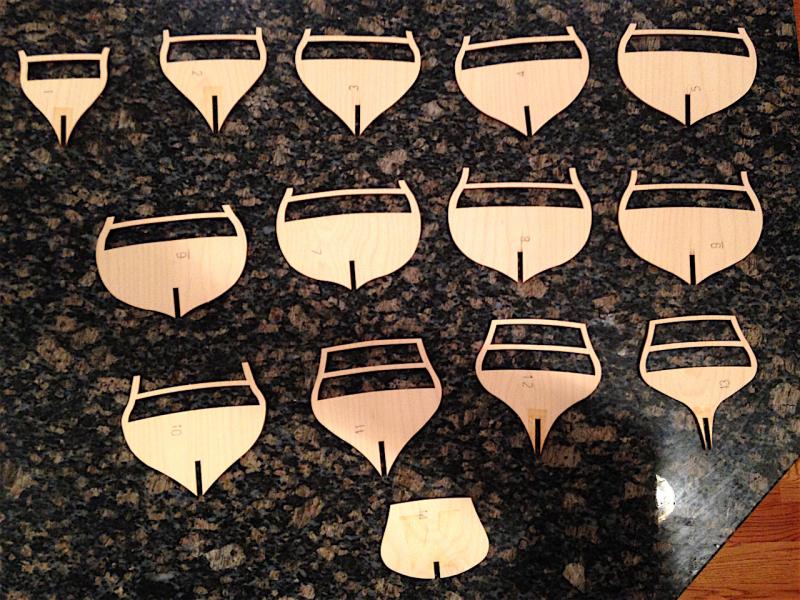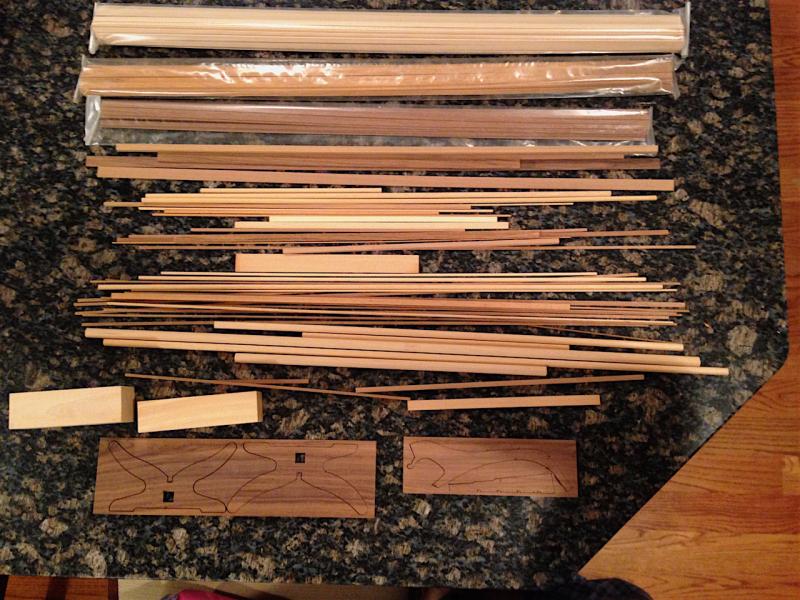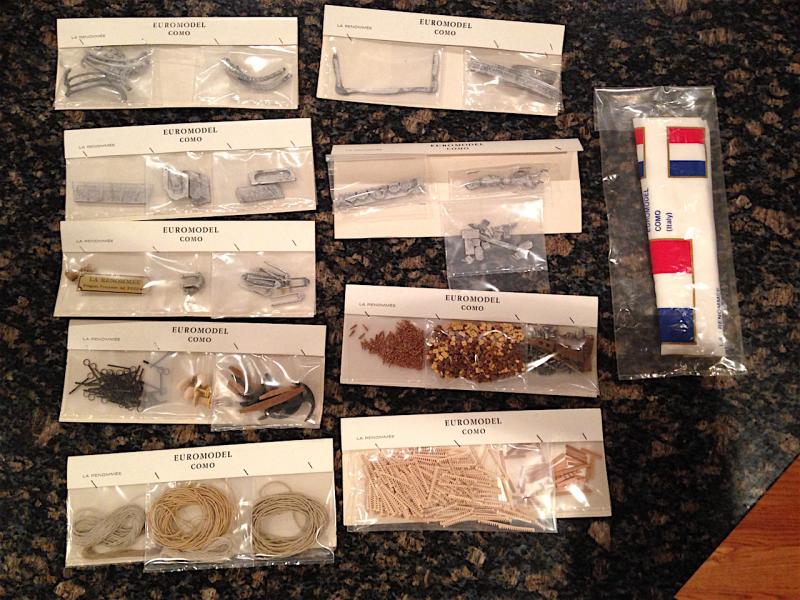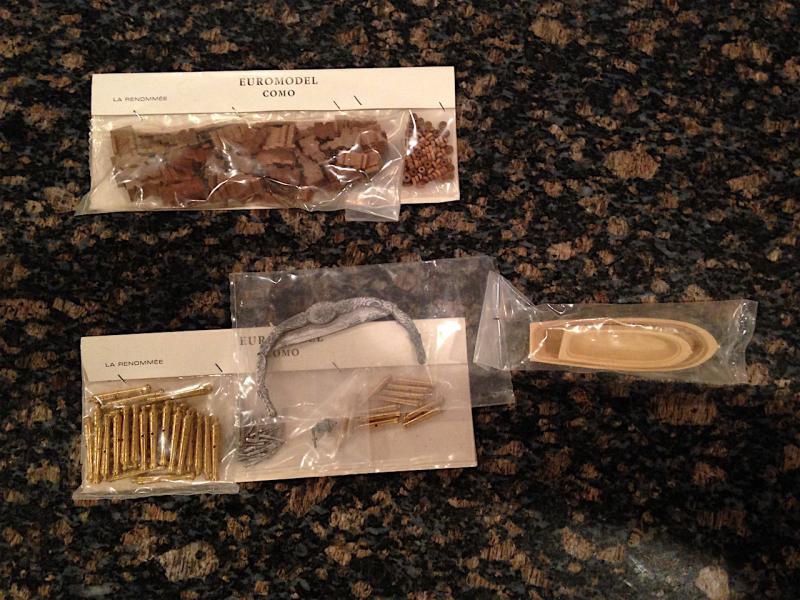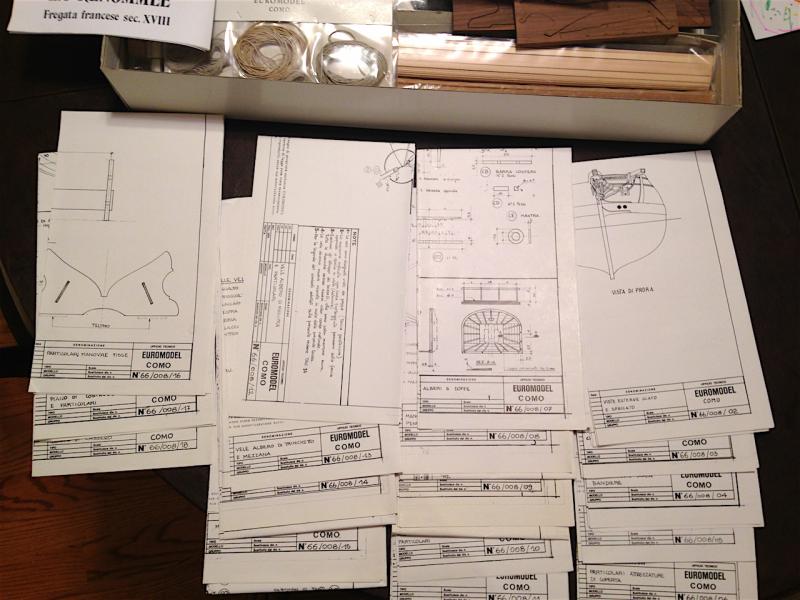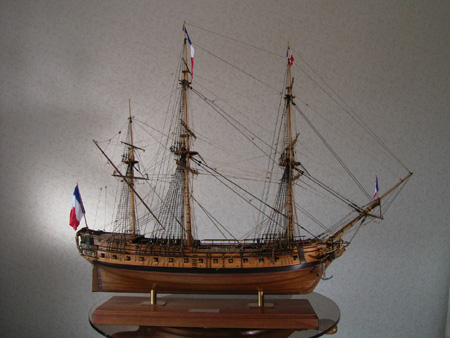-
Posts
4,540 -
Joined
-
Last visited
Content Type
Profiles
Forums
Gallery
Events
Everything posted by Landlubber Mike
-
Wow, amazing work Igor! You certainly are a master and an inspiration to other ship-in-bottle builders. Thank you for sharing your techniques! Can I ask about the wave caps? When you first put the acrylic gel on the sea, it looked very white but in the final image, it looks like the wave cap color mellowed very nicely. Did you have to do anything to achieve that? Or did the acrylic gel become clear on its own?
-
Looking beautiful EJ. I'd be so nervous having that spiritsail topmast up - I can't tell you how many times my elbows, etc. knocked the bowsprit of my Badger and messed up all the bow rigging.
- 608 replies
-
- la couronne
- corel
-
(and 1 more)
Tagged with:
-
Hey Bill, I've been using redheart on my Pegasus build, and really have enjoyed working with it. It can be a bit crumbly at times, but unless you're doing detailed carving, it hasn't been an issue for me at least when it comes to using it for planking or creating deck structures like the bitts: http://modelshipworld.com/index.php/topic/7267-hms-pegasus-by-landlubber-mike-amativictory-models-scale-164/?p=441236 I haven't worked with bloodwood, but I heard that it can be splintery, and the UV aging effects are much more dramatic. Redheart will age to an orangy-brown color, while bloodwood will turn a very dark brown almost bordering on black.
-
There were filler blocks in my MS Charles Morgan and I believe in my Euromodel kits. My Caldercraft Badger and Amati Pegasus kits didn't include blocks (I don't think the Corel Unicorn has any either). I think it certainly depends on the manufacturer. It also depends on how far apart the bulkheads are spaced at the bow and stem. On my Pegasus kit, for exactly, the bulkhead spacing at the bow and stem was quite small, leading to less need for filler blocks. Either way, it's pretty easy and cheap to source filler block material if you need it.
-
Really beautiful work Dave. Your approach of painting with wood is very inspiring. I love the approach of using holly below the wales - I'm thinking of a similar approach on my La Renommee. How did you like working with yellowheart? Is it at all splintery or can it be used for small detail parts? I have some that I'm considering using for the ochre areas on my Morgan per your suggestion
-

Power Tools for a Fully Framed Build
Landlubber Mike replied to ChrisLBren's topic in Modeling tools and Workshop Equipment
Chris, I have the Sherline lathe and mill. They get pricey, especially with all the add-ons. I went ahead and bought them used on eBay, so I was able to spend just a fraction of the price for something new. They are build like tanks, kinda like the Byrnes tools. Not sure if you need a scroll saw, but you can get those fairly cheaply on Craigslist. Lots of one-shot use items where the saw was used for a kid's science project and then never used again. I got my Dewalt 588 that way and saved quite a bit of money. -
I'm not a big fan of the use of basswood for the keel and bulkheads. There is too much flex to the skeletal structure of the hull, and plywood, or better yet, MDF would be preferable. To ensure that the keel and bulkheads stayed square, I inserted scrap pieces of plywood in between the bulkheads which not only keeps everything square, but also makes the skeleton very rigid. I highly recommend taking this extra step. It's too bad more kits didn't use the dowel approach used by MarisStella's kits - the dowels seems to be a very precise and easy method to ensure everything stays in alignment. As I mentioned earlier, I decided to take a completely "paint with wood" approach, and will be using ebony for the black areas, holly for the white, and yellowheart for the ochre (I might have to use paint on the tryworks, but I'm exploring alternatives there). I was originally going to go with African Blackwood for the black areas, but I couldn't find a supplier for thin milled wood stock and didn't want to buy a bandsaw. On recommendation of MWB, I was able to source ebony from www.inlaybanding.com in the sizes I needed. I replaced the portion of the stem above the waterline with an ebony piece. It was a shame to remove half of the stem that I cut out in pear, but I want the "black" color to be consistent throughout the build. This was my first time working with ebony, and it really wasn't that bad. I used my scroll saw to cut the stem piece, and touched it up using my Byrnes disc sander for the outside curves and my Dremel in the workstation as a poor man's spindle sander for the inside curves. The stem tapers, so I used a sanding block to accomplish that. I was very careful and used a dust mask and constantly vacuumed up any dust (which I should probably do with all woods). All in all, I didn't find it all that hard to work with. Bending it might be a different story, but aside from being careful with the dust and the fact that it is a very dense wood so sanding by hand was a little more of a workout, I had fun working with it. When sanded with fine grade sandpaper, it takes on a beautiful, almost glass like finish. The stem came out pretty nicely - I think using ebony for the full build will make for a very unique model: Ebony against the white holly I received from Jeff is very striking. I was thinking about using yellowheart for the ochre areas, and possibly maple (stained a light grey to match the actual ship) for the deck. I knew holly had very little grain, but ebony almost looks painted. So, I'm wondering how using yellowheart, which has a lot of grain and some figure, will look against the ebony and holly. I might switch it to boxwood, but am curious if anyone has any thoughts on the look of grainy versus non-grainy woods together. Thanks for looking in!
-
While taking a break from my Pegasus (burnout from planking) and the La Renommee (thinking about color scheme), I turned back to the Morgan and made a little progress. First up was creating the counter block, which took quite a long time. It's a complicated piece that is not rectangular in the sense of having 90 degree corners. Instead, the top of the block needs to account for the deck camber, the sides need to taper inward on a slight angle, and the aft side is rounded with an offset section for the name board. I know folks (including me) complain about kits using gunport strips, but the benefit of the gunport strips is incredibly helpful in pre-determining the counter and tuck of the planks into it. The stern/counter area can ruin an otherwise nice model if not done correctly, so I always have a bit of angst when working on this section of the model. After a few hours or work though, I'm pretty happy with the final product. I'll need to do a little touch up when it's attached to the hull, and I can work out any other issues with filler and the first planking. The one area in particular that I need to figure out is the bottom corners on the aft side. The plans show a rounding, but I think I'll understand better after running some test planks to that section along with the fashion pieces. Anywhere, here are the pictures of where I ended up in case other builders have questions on how the counter block should be constructed :
-
Joe, really great coppering! Very nice job! Just out of curiosity, what did you think of the tape? It has a different look than the copper plates in my Pegasus kit, which I think are individual plates that are pre-marked with rivets. The two also differ in terms of the copper hue - the ME tape looks more like the copper you see in copper wires, while the Amati plates are more maybe pinkish in color. I've been thinking about upgrading the copper in my Morgan kit, but your work makes me think the tape works very nicely.
- 136 replies
-
- caldercraft
- Cruiser
-
(and 2 more)
Tagged with:
-
Really nice work Don. The wood in the MarisStella kits is really beautiful with a natural finish. By the way, I blame you for me now working on three builds at the same time
- 653 replies
-
- trabakul
- marisstella
-
(and 1 more)
Tagged with:
-
Friends, I'm a bit stuck in terms of a color scheme for the hull. I was originally going to go with a similar approach that Kenji Nakajima's build took (first picture at the top of my log) and go with mostly black and either walnut or pear for the brown areas, with boxwood accents. But, after seeing Chapman's plans for the Venus and the two builds for the Göta Lejon, I'm thinking of trying something different. In particular, I'm really taken by the color scheme on this model: If I went that route, does the blue strip running across the full hull look odd? Does it look odd to have the dark brown areas just above that blue stripe? I haven't seen too many ships with this color scheme, but it seems like these Swedish ships might have had a slightly different color scheme from other European ships. An alternative is Chapman's color plan of the Venus, which is similar, except it looks like a black stripe runs across the top of the hull, but there is a red stripe at the top near the quarterdeck: Alternatively, I could go with something like this color plan, where it's mostly black and pear around the gunports, with blue at the top of the hull at the quarterdeck and forecastle: Any suggestions or preferences would be greatly appreciated as I try to figure things out. To avoid the use of paint, I'd do the hull below the waterline in holly, wales in black, and that middle band around the gunport likely in pear (I think box might be a little light for my tastes). It's just what to do with the other areas of the upper hull that I can't decide on Thanks!
-
Thanks guys, really appreciate the support. Jason, I'll have to do a little more research I spent some time with the kit the last few days. First I test fit the bulkheads with the keel, and was happy to see that there was a nice snug fit without the need for much opening of the slots. So, a good start on things. Then I read Pete's build notes - a very nice resource for Euromodel builds. He correctly pointed out that the mast slots in the keel are incorrectly positioned. Not only are the slots positioned too far back, but the main mast and mizzen masts are at the wrong rake. Pete did say that the foremast needed to be repositioned another 3mm, but at least with my keel, it seemed like the foremast slot was maybe off only 1mm or so, if at all, and was at the correct rake. Interestingly, the keel matches Plan Sheet 17, but not Plan Sheet 3. My guess is that Plan Sheet 3 is correct, after looking at other plan sheets in the kit and taking a look at Chapman's Plate XXXI. So, I redid the slots for the main and mizzen masts, which included adding some scrap plywood so that the masts would fit snug in the slots. Thankfully Pete pointed this out, as it was an easy fix at this stage. I had heard of people having issues with the plans not matching up, and that does seem to be the case unfortunately. Interestingly, the stem matches Plan Sheet 17 (first picture below), but not Plan Sheet 3 (second and third pictures). You can even see how the bulkhead slots on the plans don't match up with the slots in the keel: The stem is pretty close, but this brought back painful memories of the Corel Unicorn kit, which I abandoned in frustration because the plans were all over the place, and on top of that, did not match the Chapman plans in the Architectura in having a hull that was too tall by a factor of something like 20mm. So, I spent some time taking various measurements (gunports to waterline, waterline to bottom of keel, etc.) against Chapman's Plate XXXI. In my edition of the Architectura, Plate XXXI is smaller than the Euromodel plans by a factor of approximately 2.3. I am very happy to say that the Euromodel plans appear spot on with the Chapman plans in terms of hull dimensions! I do want to say that I don't want to come across as overly critical of the kit or anything. Just wanted to point these items out so that others that might be following this log might avoid any confusion with their kits. Aside from a few inconsistencies, the plans seem very true to Chapman's Plate XXI which is a big relief. Next I started work on determining where to install the mounting screws for the pedestals. I've been using #6-32 zinc plated machine screws with a nut epoxied into the keel. They seem to fit nicely through the pedestals I bought from Model Expo, and I can get the screws in 3" lengths. The stern is a bit lower than the stem, so I started by marking the waterline, and then positioned the pedestals approximately 25% of the way from both the aft end and fore end of the keel. This worked nicely in that the pedestals were safely between bulkheads. I'm still considering color schemes, so I'll drill the holes for the screws/nuts once I figure out the wood to be used for the keel. Here's a quick photo I snapped, with some bonus artwork in the background from the real artists in the family
-
Really nice work Martin. Great job on everything. Those Fly plans are really detailed, to the point of even detailing the friezes. Are you going to add them to your Fly? Will you use photo-etched parts (not sure if the Fly kit has them, the Pegasus does) or paint them on? I think I'm leaning towards painting them on.
- 467 replies
-
- fly
- victory models
-
(and 1 more)
Tagged with:
-
Really amazing work Greg, wow! It's amazing how much detail these plastic kits have, especially with the various upgrade options. I think I'd be really nervous undertaking a project with such small detail pieces. I can't tell you how many nights I spent a ton of time coming through the living room rug looking for a small piece that fell to the ground - the PE pieces on your Dreadnought would really be a pain to find!
- 342 replies
-
- dreadnought
- zvezda
-
(and 2 more)
Tagged with:
-
I haven't been able to find much on Swedish frigates on the period. One ship I did come across is the Göta Lejon from 1746. I found plans as well as two beautiful models. It's obviously a bigger ship (I think a Third Rate), but it shares a lot of the design characteristics seen in Chapman's Plates XXXI and XXXII of his Architectura. This, along with the Venus pictured a few posts ago (and the closed waist), make me lean towards thinking that the ship in the plates is a Swedish vessel.
-
Thanks everyone - the more the merrier! Mark, part of what sent me down this path of research was the helpful discussion you and others had with J.P. on his build log. I wasn't aware of the stove/fireplace distinction though, thank you! I need to get my hands on the Boudriot "History of the French Frigate" book - it's one of the few very expensive books out there though
-
Thanks Frank, really appreciate the kind words. I'm sorta bumbling along and driving myself crazy at times, but I really am having fun playing with wood and power tools (though, it's probably all fun until someone loses a finger!). One of these days I want to go for the "Frank weathered special" on a model
-
Provenance of Kit There has been a lot of discussion on what ship this kit is supposed to represent. What is clear is that the kit is based on Plates XXXI and XXXII of Chapman's Architectura, with the only details being that these plates are included in the section of "Privateers": Euromodel states it's a French vessel that was launched in 1747. However, it appears that the ship at the following links is likely the "true" La Renommee for that period: http://ancre.fr/en/monographies-en/20-monographie-de-la-renommee-fregate-de-8-1744.html http://maquettes-marine.pagesperso-orange.fr/renommee/renommee.html http://www.shipmodels.com.ua/eng/models/elite/renomme/index.htm From what I've read on a Russian ship model forum, in Boudriot's research, Admiral Paris, a Frenchman, in his Souvenirs de la Marine (which was published in 1879), was copying over plans from Chapman's Architectura and mistakenly labeled it the Le Renommee, when he was intending to say something about the anchors or stern or something being similar to the Le Renommee. That mistake has been passed down, and may have been passed down into this kit. Then there is Keith Julier, in The Period Ship Handbook 2, who believed that the kit represents a frigate of the same name that was built in 1793. That vessel only had 32 guns, while the kit supplies 40. It clearly can't be that ship because the Architectura was published in 1768. Then there are others that think it's actually a Swedish ship named the "Jupiter" because of the figurehead and certain stern details. On page 106 of Wolfram zu Mondfeld's "Historic Ship Models" is the exact picture of the stern which is labeled as the Swedish privateer from 1760. The German site below, as well as a Russian model ship forum I came across, also think it's a Swedish ship. I can't find anything on a Swedish ship named the Jupiter though, and a query to the Digitalt Museum in Sweden came up empty. http://www.line-of-b...regatte-jupiter I'm by no means a naval historian at all, but all this is very interesting. One thing I was thinking was whether there were particular features of this ship that are uniquely French, Swedish, Danish or other. I would surmise that you could look to plainly visible things like the figurehead, ornamentation, flags, etc. Then there are structural items such as how the stern is constructed, height between the decks (for example, I learned in researching the Unicorn and Lyme that they were based off of French frigates, which had a lower height between the decks than seen in the typical English ship of that time, as well as had shorter railing, etc. on the quarterdecks). I thought maybe the open stern would provide a clue, but Plate III shows a very similar but smaller (and unfortunately, unknown) ship, and Plate LI shows another with a similar open stern that is of an English East Indiaman. One clue might be the waist. I've done a lot of research on the waist of ships because the Corel Unicorn clearly uses the wrong waist for a British frigate of that time. From the Gardiner books on frigates, the waist of ships in the 18th century was generally open during the early to middle part of the century, and gradually started closing up as the 19th century approached. I think this principle clearly applied to British ships, and likely French ships as well (I don't have any books on French frigates, but flipping through the Ancre monographs for ships at the time, all seemed to have similar open-waisted ships to the British). Gardiner seems to have essentially limited his studies to British frigates, as his last book, the "Sailing Frigate," uses pictures from the NMM. In that book, he shows the development of the filling in of the waist, and shows a similar closed waist with row of light gratings similar to Plate XXXII with the Lacedaemonian (SLR0674 from the NMM), a ship that was circa 1812: http://collections.r...ects/66635.html What's curious is that Plate XXXII shows a very closed waist which wasn't used by the British until the beginning of the 19th century. So, I don't think Chapman copied it from the British. Then take a look at the Venus, an actual Swedish frigate that was designed by Chapman and built in 1783 (it was captured by the Russians in 1789): A smaller ship for sure, and obviously post-dates the Architectura. But look at the general design with the gunport rows, small windows at the quarterdeck, the name badge just under the row of windows on the stern, and in particular, the waist and main deck with the rows of gratings (again, not seen in British frigates until the beginning of the 19th century). It looks like the little younger sister to Plate XXXI! All this is not at all meant to disparage Euromodel. The kit is clearly based on, and true to, Chapman's plans. As we know, actual ships sometimes differed from the plans, ships were captured and converted, etc. In any event, whether Chapman himself designed the ship in Plates XXXI and XXXII or copied it from elsewhere is anyone's guess, but I would lean towards this being a Chapman design given the early adoption of the closed waist and line of gratings. Now, whether the ship in Plates XXXI and XXXII was in fact built or not is also anyone's guess. And does this make this a Swedish ship? In the grand scheme of things, does any of this matter? The kit makes for a very nice model of a mid-18th century frigate with really beautiful lines that I will have a lot of fun building - regardless of whether I put a French or Swedish flag on her in the end
-
There are a few Euromodel build logs on here, and one thing that really stands out with their kits is the quality. The plans are absolutely first rate. This kit has 18 plan sheets, which go into incredible detail on everything from deck items, to rigging, sails, etc. The order in which things are presented in the sheets is a bit of a head scratcher, but not an issue. The wood in the kit is also very good, and the fittings are especially nice. The cast pieces in particular are really well done - they really put the MS Charles Morgan cast pieces to shame. The box is quite heavy! Here are some pictures of what comes in the box:
-
My next model is the La Renommee kit from Euromodel: This kit has been on my wishlist for quite a long time. I believe someone had a beautiful build log going pre-crash with MSW 1.0. That image stuck with me, as well as the Kenji Nakajima model pictured above. As far as I can tell, the only log going here is from J.P., who is doing a masterful job and setting the bar very high! I bought the kit on eBay a few months ago. I originally was going to build this after I finished the Pegasus and Charles Morgan, but given how much I have been bashing those two kits, I thought it would be a nice change of pace to build a kit from the box (even though Euromodel kits often encourage builders to take advantage of the incredible plans to enhance the kit). I also have the Euromodel Friedrich Wilhelm zu Pferde on my shelf -- a really amazing kit -- but I want to better my skills before tackling that kit to do it the justice it deserves. When my kit arrived, I realized not only was I missing Plan Sheet 1, but the keel was pretty warped (it had obviously been sitting somewhere for quite a while). I contacted Euromodel, and Massimo Mazza was incredibly courteous and helpful in replacing both for me. To show my gratitude for Euromodel's kindness, I decided that I would start this model alongside the others. I just hope to do the kit, Massimo and the other folks at Euromodel proud by my efforts! One thing I should mention is that this kit is in Italian and has limited instructions. However, Euromodel, together with MSW's own PiratePete007, have done a really nice job in providing translation and other materials. In particular, Pete has really done us model builders (and Euromodel) a great service in putting together very detailed guides on how one can go about putting together models from the Euromodel line-up. Those guides are really well done and very insightful, especially for me as I am on the beginner end of the spectrum, so a big thank you to Pete!
About us
Modelshipworld - Advancing Ship Modeling through Research
SSL Secured
Your security is important for us so this Website is SSL-Secured
NRG Mailing Address
Nautical Research Guild
237 South Lincoln Street
Westmont IL, 60559-1917
Model Ship World ® and the MSW logo are Registered Trademarks, and belong to the Nautical Research Guild (United States Patent and Trademark Office: No. 6,929,264 & No. 6,929,274, registered Dec. 20, 2022)
Helpful Links
About the NRG
If you enjoy building ship models that are historically accurate as well as beautiful, then The Nautical Research Guild (NRG) is just right for you.
The Guild is a non-profit educational organization whose mission is to “Advance Ship Modeling Through Research”. We provide support to our members in their efforts to raise the quality of their model ships.
The Nautical Research Guild has published our world-renowned quarterly magazine, The Nautical Research Journal, since 1955. The pages of the Journal are full of articles by accomplished ship modelers who show you how they create those exquisite details on their models, and by maritime historians who show you the correct details to build. The Journal is available in both print and digital editions. Go to the NRG web site (www.thenrg.org) to download a complimentary digital copy of the Journal. The NRG also publishes plan sets, books and compilations of back issues of the Journal and the former Ships in Scale and Model Ship Builder magazines.



